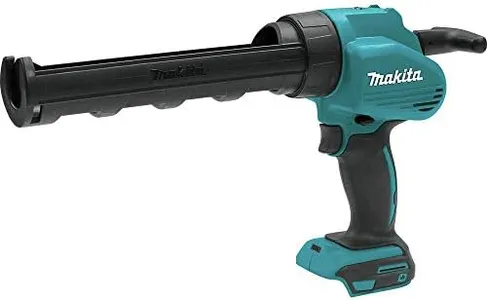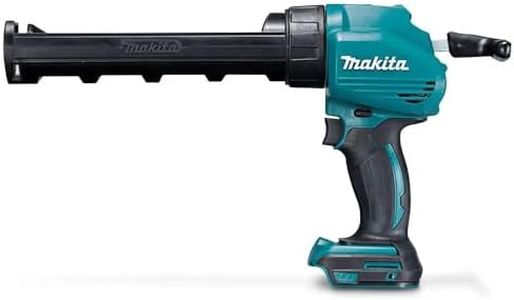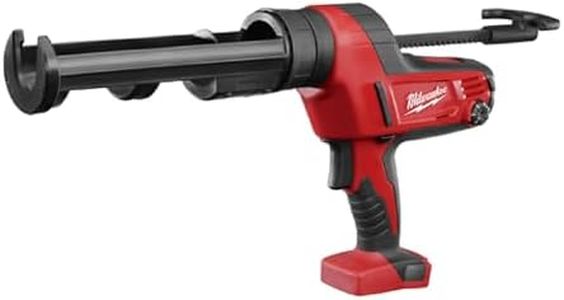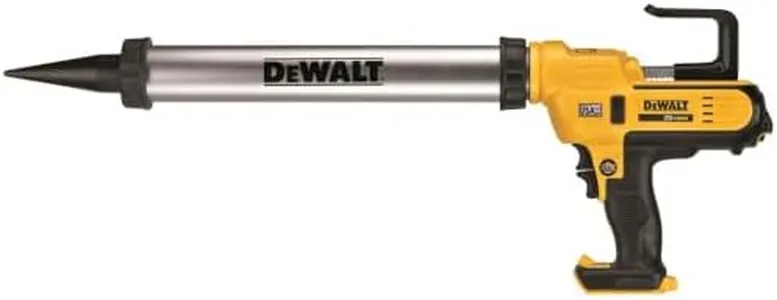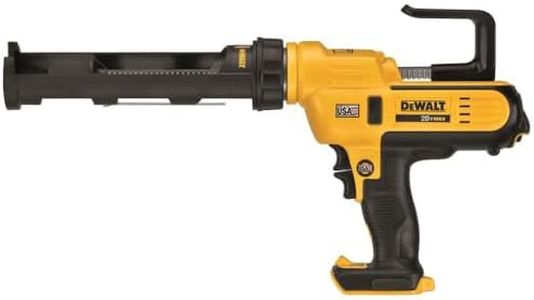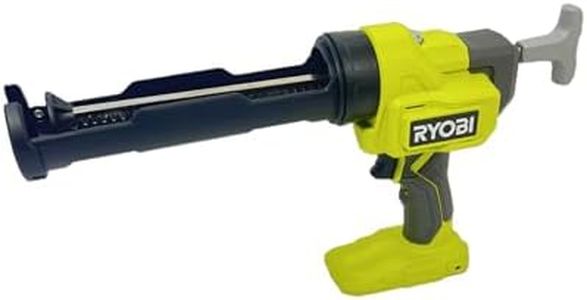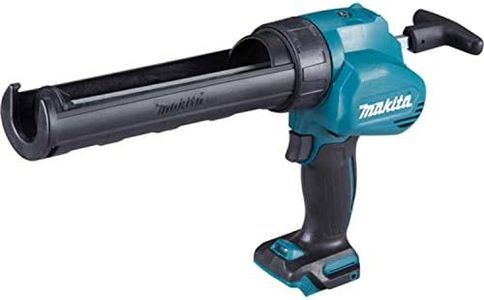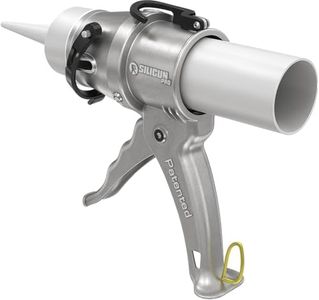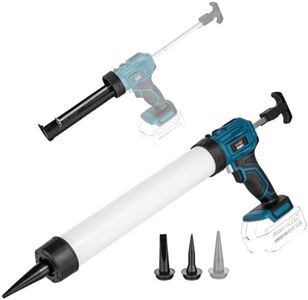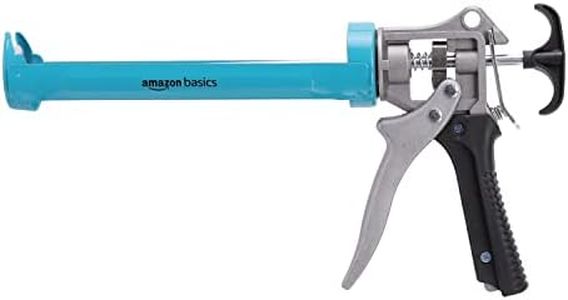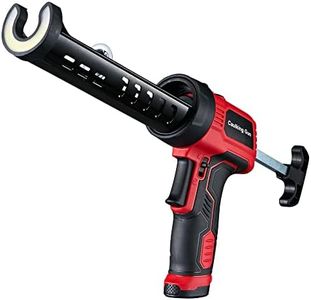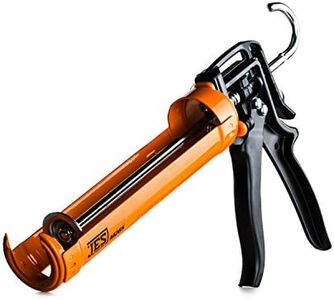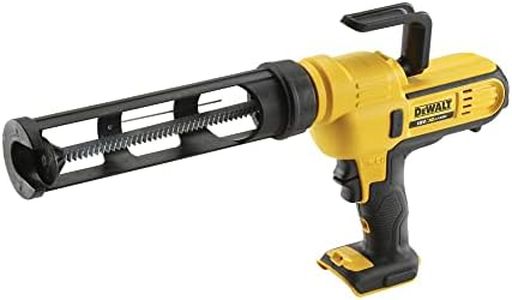We Use CookiesWe use cookies to enhance the security, performance,
functionality and for analytical and promotional activities. By continuing to browse this site you
are agreeing to our privacy policy
10 Best Caulking Guns
From leading brands and best sellers available on the web.Buying Guide for the Best Caulking Guns
Choosing a caulking gun can seem tricky at first, but a little knowledge helps go a long way. The right caulking gun makes sealing gaps, cracks, and joints easier, cleaner, and less tiring. Consider what kind of tasks you need to do—whether they're small repairs or bigger renovation jobs—and think about how often you'll use the tool and how comfortable you want the experience to be. Paying attention to the main features of caulking guns will help you pick a tool that fits your hand, your project’s demands, and delivers a neat result.Type (Manual, Battery-powered, Pneumatic)The type of caulking gun refers to how it is powered—manual, battery-powered (cordless), or pneumatic (air-powered). Manual caulking guns are operated by squeezing a trigger, making them simple and suitable for most home projects. Battery-powered options require less effort, great for larger jobs or if you want to avoid hand fatigue. Pneumatic guns use air pressure and are best for professionals or those with big, frequent projects. If you just need a tool for occasional use at home, a manual model is straightforward and reliable, but if you expect to do a lot of sealing or value easier operation, consider the powered versions.
Thrust RatioThrust ratio tells you how much squeezing force is applied to the tube for each pull of the trigger. Lower ratios (around 5:1 to 10:1) work fine for basic jobs with thin or standard caulk. Higher thrust ratios (up to 26:1 or more) are better for thick, hard-to-press materials or when using the tool in colder environments. If you’ll be using thick adhesives or sealants, or want less strain when working, look for a higher thrust ratio. For easier materials and simple tasks, a lower ratio will do just fine.
Frame Style (Open vs. Enclosed/Dripless)Frame style refers to how the caulk tube is held in place. Open frames offer easy loading and lightweight design, making them practical for quick or small jobs. Enclosed or dripless frames tend to control the flow better and reduce mess, often stopping the caulk as soon as you release the trigger. For precision and tidiness, especially with indoor jobs or detailed work, dripless guns are very handy. For quick fixes or outdoor use where a little extra mess isn't an issue, open frames can be perfectly fine.
Barrel Size/CompatibilityBarrel size and compatibility determine what size and type of sealant tubes you can use. Most guns fit standard 10-ounce tubes, but others can accept larger or different types such as sausage packs. Make sure to check the labels of both your gun and the caulk you intend to use. If you only work on small tasks, standard barrels suffice. For bigger projects where large amounts of caulk are needed, consider a gun that handles bigger tubes to reduce reloads.
Weight and ErgonomicsWeight and ergonomics describe how heavy and comfortable the caulking gun feels in your hand during use. A lighter, well-designed gun is easier to handle, especially across long projects or when working overhead. If you have smaller hands or expect to use it in tight spots, look for slimmer, padded grips and a balanced design. If you only use it for quick jobs, weight may not be a major concern, but regular use means comfort will strongly affect your experience.
